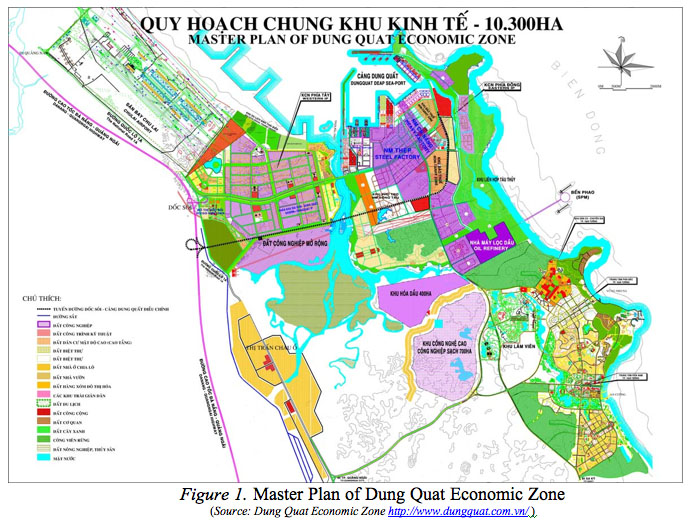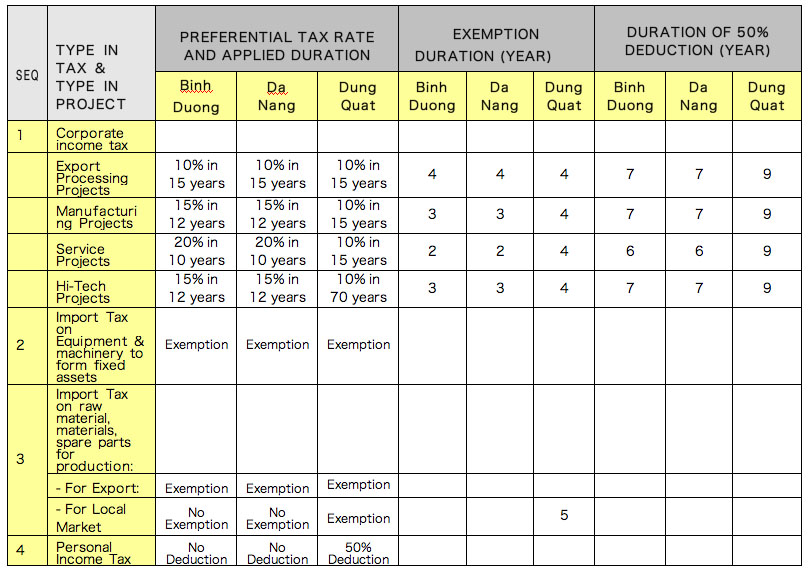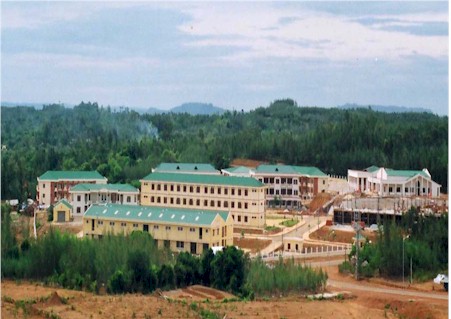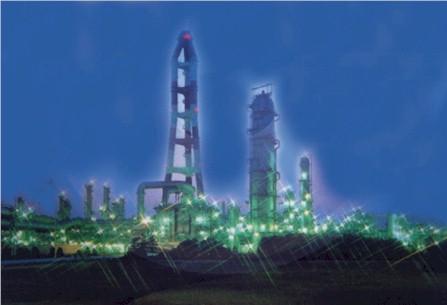
| Dung Quat Economic Zone (EZ),
Quang Ngai promises to soar Along with China and India, Vietnam is making the news in Asia due to its impressive growth (average at 7.8%) in recent years. As a result, more and more foreign businesses have turned their eyes to Vietnam, hoping to find success in this low cost country or hoping to obtain a share of profits in this booming new marketplace. However, a closer look into the Vietnamese economy will show an uneven development across the S-shape country: while regions around the two large deltas in the north and south of Vietnam – Red River and Mekong River Deltas – continue to grow at a rapid pace, the central region has remained more backward in almost every aspect. This has been a concern to the Vietnamese government and international authorities like the World Bank and that Asia Development Bank as development of a newly emerging economy such as Vietnam is always best if the development is more distributed throughout the country instead of solely being focused in one or two locations.
After more than a decade of being juggled from one investor to another, the plan for Dung Quat Economic Zone is finally closer to being materialized as the Vietnamese authorities have come more to realize that they must more proactively push development and as the government successfully puts their determination into action. Since 2003, the construction of Dung Quat Oil refinery – the first in Vietnam – has been in progress, and in 2005, a decision by the Prime Minister of Vietnam was promulgated, promoting the formation of Dung Quat Economic Zone. Although much of the colossal plan is still on paper, this time investors have been more convinced by the government’s and local authorities’ actions and Dung Quat project’s viability. Certainly, the dedication seems ready to pay off; Dung Quat seems to be ready to gain lift off by 2010. The long saga commenced in 1995 with the government’s plan to build the first oil refinery in Vietnam. Despite much disputation, the plan was given to Quang Ngai, a central coastal province of Vietnam, about 900 km (550 miles) from Hanoi and Ho Chi Minh City. Quang Ngai, which is one of the poorest areas in Vietnam because of the prevalence of both seasonal droughts, and Typhoon’s, which often flood this coastal region, was considered by many to be an unlikely location for such a project. The government understood this criticism but officials believed that the launching of such a project would help to boost the economy in the central Vietnam in general and in Quang Ngai in particular by creating hundreds of thousands of jobs during both the construction phase and later in supporting services. As such, the project would help to create development where no development, hope and jobs where none of this existed at the time.
To complement the first oil refinery, the Vietnamese government also decided to establish Dung Quat Economic Zone (EZ), one of the two key projects for the central region’s development. Converted from Dung Quat Industrial Zone, the new EZ extends beyond the industrial field to cater to multiple sectors and a well-designed plan for nearby towns and cities as well. Apart from the oil refinery industry, petro-chemical, chemicals, shipbuilding and repair, metallurgy, cement plant, container manufacturing, other consuming goods production, and exports are also the focus of the new EZ. These targets will be enhanced by the presence of Dung Quat deep-water seaport, Chu Lai international airport, Van Tuong industrial and service city, and Doc Soi city, which are also in the progress of construction and expansion. Dung Quat Economic Zone will be comprised of six functional regions: light industrial zone, heavy industrial zone, Van Tuong new town, Dung Quat port, Van Tuong marine and ecological tourism resort, and a non-tariff zone. New residential areas are being built at Van Tuong new town and Doc Soi city to serve foreign experts and workers at Dung Quat EZ. As a matter of fact, the first 20 villas were recently handed over for the use of Technip experts; more than 170 rooms and a recreation center so far has served the needs of Technip employees. Other facilities are growing to cater to new cities’ residents and serve Dung Quat EZ; these include an international high school, a vocational school, a hospital, recreation center, a media center, an environmental monitoring center, etc… By 2020, Van Tuong city is projected to house about 200,000 people, most of whom will be the labor force at Dung Quat EZ.  Dung Quat is a name that is familiar to me as I have been hearing it nearly continuously sine 1991 when I returned to work toward a new diplomatic relationship between the U.S. and Vietnam. Given the track record to-date, I must say I was skeptical. I therefore have been e-mailing frequently with Mr. Le Van Dung, Director of the Center for Investment & Trade Promotion at the Dung Quat Economic Zone Authority (DEZA) and met recently with Cao Xuan Chung, the Vice Director, and Ms. Bui Thi Ngan, a recent Fulbright scholar who has returned to work in the Dung Quat Industrial Estate Authority Representative office in Ho Chi Minh City. According to Dung Quat authorities, Dung Quat EZ is ranked first among other industrial and economic zones in terms of large-size investment attraction, and is slated to maintain it’s standing in the years to come. What has made both domestic and foreign investors change their mind after a decade? Although investment incentives play an important role, the government’s commitment to the project’s success and Vietnam’s growth in recent years undoubtedly craft the credibility that persuades the investors. A one-price policy for both Vietnamese and foreigners, income tax reduction, import tax exemption, these are only some of the incentives that have helped to draw investors’ attention to Dung Quat EZ. A comparison of tax incentives between Dung Quat EZ and two of the largest and most high potential industrial zones in Vietnam, Binh Duong and Dong Nai, reveals the comparative advantages in favor of Dung Quat EZ. Table: Comparison of tax incentives in Dung Quat EZ and other IZs in Vietnam  According to Mr. Le Van Dung and Mr.Cao Xuan Chung, this new policy is already bearing results. The first phase of infrastructure has been completed and the 2nd phase is now extensively underway. To-date 93 projects valued at over $5 billion have been approved including the $2.5 billion oil refinery. Twenty-five projects are in actual operation including a large ship building venture (Vinasin) valued at over US$300 million that will be able to build ships up to 100,000 DWT. The Vinasin ship building operation already has 500-600 workers and is expected to have 10,000 at full capacity in the future. In addition to Vinasin, the Tycoon Steel Mill, a Taiwanese invested venture, has received approval from the Prime Minister and should receive an investment license from the MPI shortly. Further, a large Korean company located in Pusan has received an MPI license to begin fabricating electricity transformers, cranes, heavy industry equipment and equipment for the oil industry in Dung Quat. Unlike other IZs’ investors, Dung Quat EZ’s will not have to be concerned about transportation in the near future, thanks to the ongoing construction and expansion of Chu Lai airport and Dung Quat port, which will be able to receive ships of up to 70,000 DWT (dead weight ton). Instead of going through the major ports in the north and the south of Vietnam, more and more routes will be opened to connect Dung Quat directly with international destinations. The first phase of the project is supposed to be put into operation by early in the second quarter of 2007; ships of up to 30,000 DWT will be able to dock at Dung Quat port even during stormy season thanks to a large-scale breakwater. Despite its recent success in landing the Taiwanese funded Tycoon Steel mill and the Korean funded heavy machinery project, Dung Quat EZ is still looking for investors for other areas including oil refining, petrochemical, infrastructure development, port development, and tourism. If things go right, the future looks bright for Dung Quat EZ and the central Vietnam’s economic development. The Dung Quat authorities seem to realize that investment won’t just happen and that more needs to be done to promote investor name recognition of Dung Quat and full appreciation for the benefits this location may offer as a site for larger scale production, particular in Heavy Industry. Dung Quat authorities told us that they seek greater investment participation from the U.S., Japan and Europe as well as major regional players like Korea, Taiwan, Thailand, Malaysia and others. They plan to work to improve their investor outreach activities, which are definitely needed in such a competitive environment for investment. We plan to continue to follow-up on this old name which is just now starting to be heard outside of Vietnam and will report periodically on the Estate Authorities progress.  Pictures: (left) Dung Quat Traning Schook and (right) Dung Quat International Hospital About the Author: Christopher W. Runckel, a former senior US diplomat who served in many counties in Asia, is a graduate of the University of Oregon and Lewis and Clark Law School. He served as Deputy General Counsel of President Gerald Ford’s Presidential Clemency Board. Mr. Runckel is the principal and founder of Runckel & Associates, a Portland, Oregon based consulting company that assists businesses expand business opportunities in Asia. (www.business-in-asia.com) Until April of 1999, Mr. Runckel was Minister-Counselor of the US Embassy in Beijing, China. Mr. Runckel lived and worked in Thailand for over six years. He was the first permanently assigned U.S. diplomat to return to Vietnam after the Vietnam War. In 1997, he was awarded the U.S. Department of States highest award for service, the Distinguished Honor Award, for his contribution to improving U.S.-Vietnam relations. Mr. Runckel is one of only two non-Ambassadors to receive this award in the 200-year history of the U.S. diplomatic service. |
|
|
www.Business-in-Asia.com
